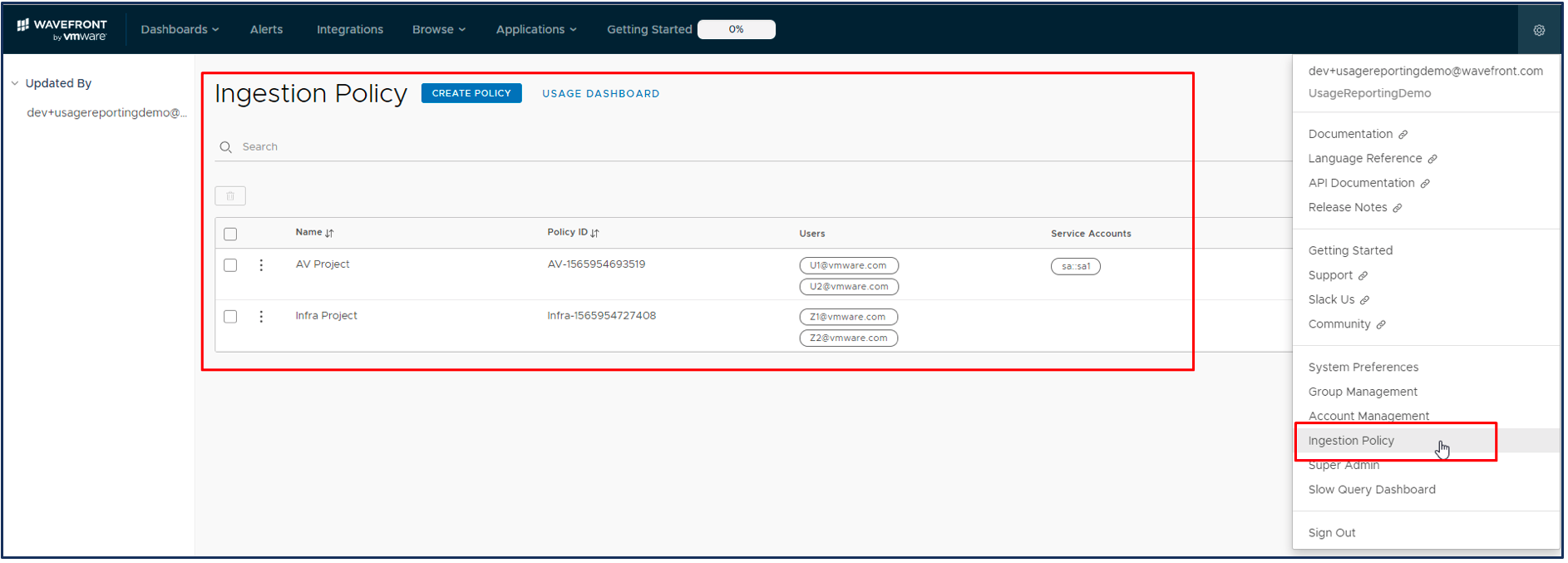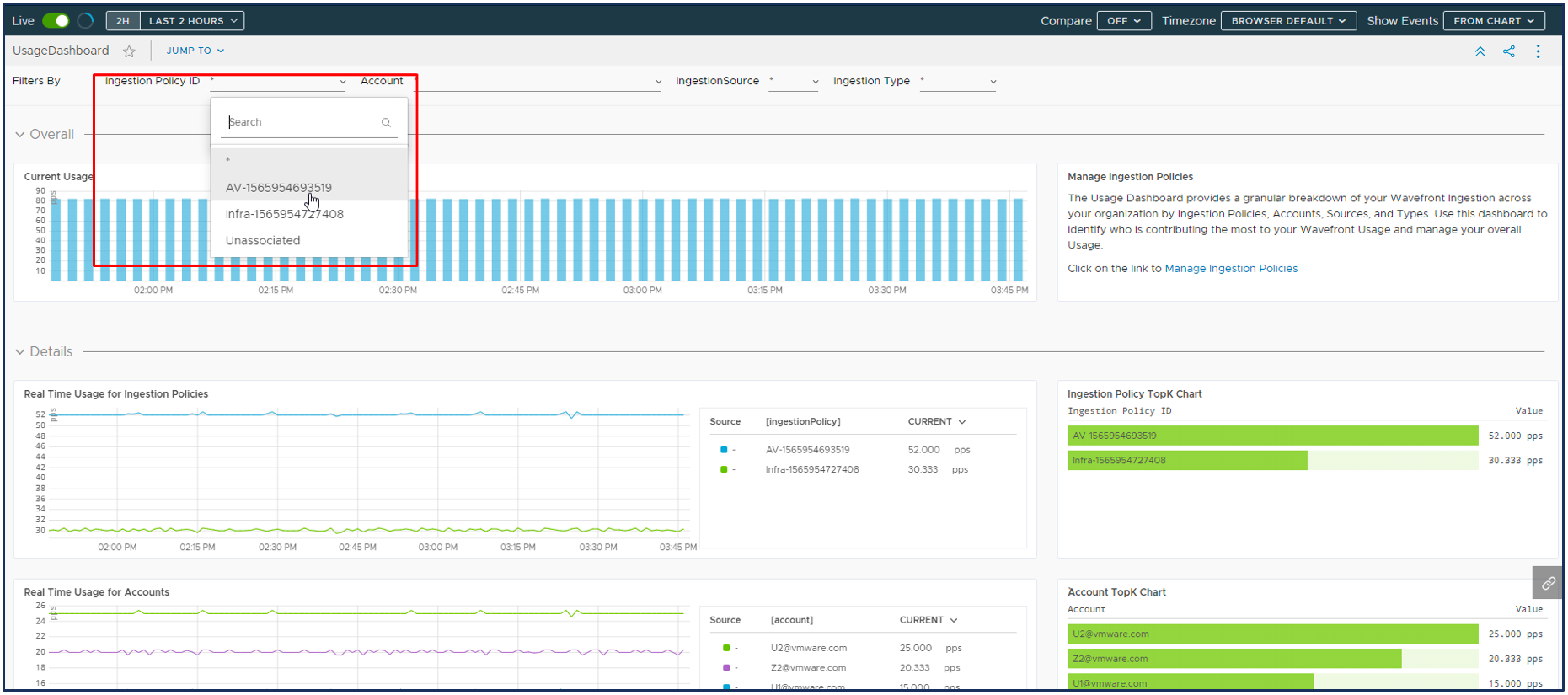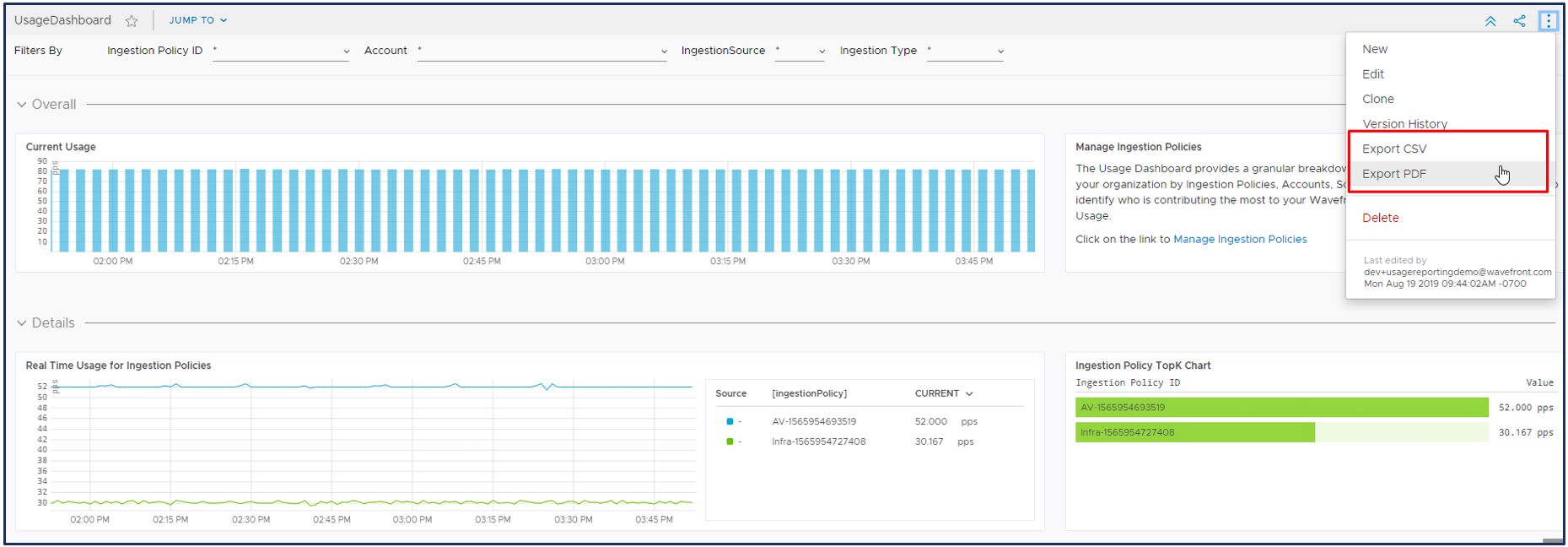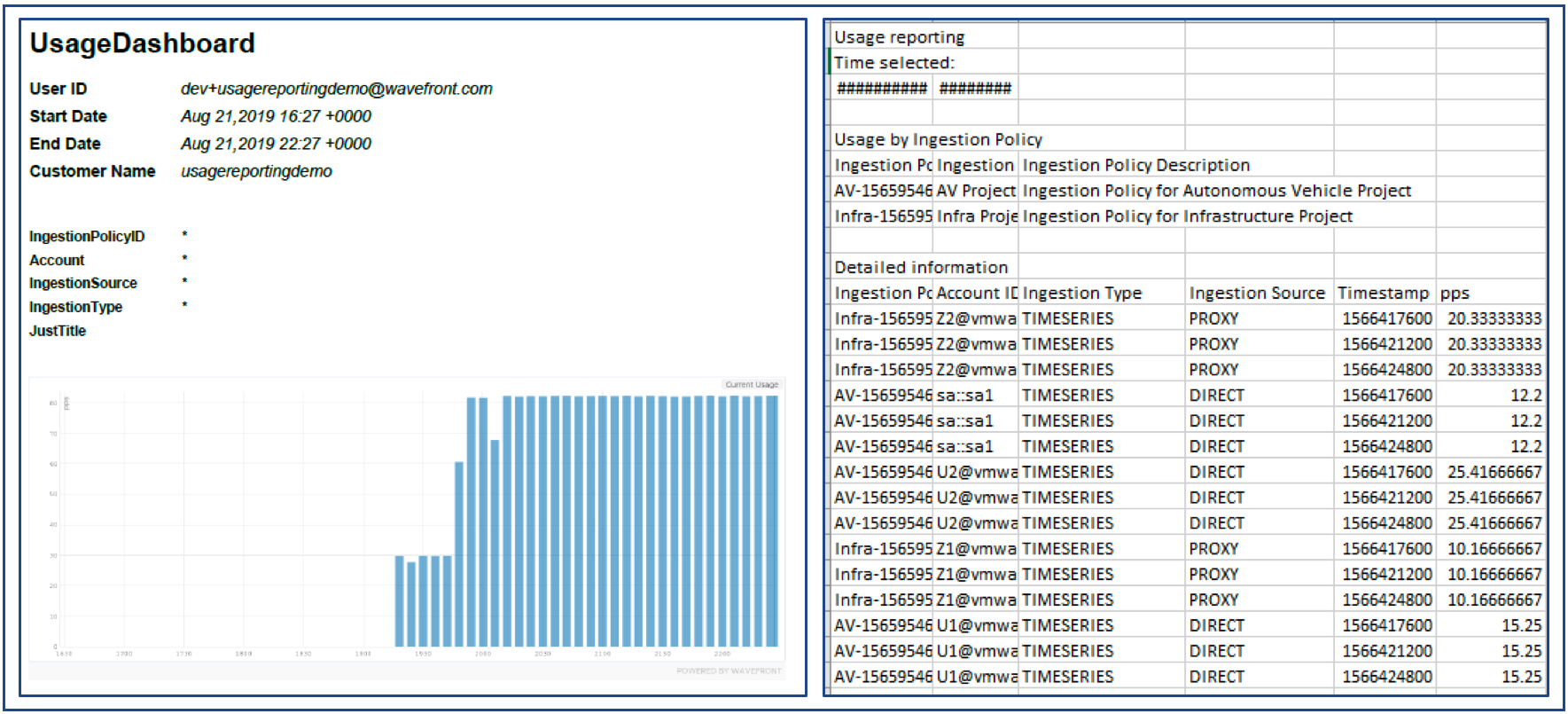Enterprises are increasingly adopting cloud for deploying applications and moving to a subscription-based business model for running their SaaS initiatives. Enterprise observability platforms, like Wavefront, have proven to be well suited for helping Dev, Ops, and centralized observability teams to ensure frictionless application SLAs, feature updates, and ultimately customer satisfaction. All these factors drive the need for accountability and cost management around the usage of Wavefront.
The Need for Reporting Transparency
Many of our enterprise customers have wanted to:
- Get visibility into and reports about the factors contributing to their observability usage
- Set controls to manage consumption responsibly and to align the use of Wavefront with business goals and projects
- Make these processes self-service
The Wavefront Solution
To help users get detailed insight into their environment while consuming resources responsibly, earlier this week we launched a set of new reporting and metering features that help observability teams use Wavefront to achieve the above goals and manage to spend responsibly.
- Ingestion Policies: Ingestion policies help you logically group together accounts (user accounts, service accounts) that use Wavefront. These logical groups can be based on projects or environments that you have defined internally within your organization against which you would like to track use of Wavefront or get the breakdown of ingestion.
- Usage Dashboards: Provides a granular breakdown of Wavefront consumption across your teams by ingestion policies, accounts, sources, and types.
- Quotas: Set limits on the rate of ingestion, receive alerts, and choose to reject points when the quota is exceeded if necessary.
- Export Data: Export the charts and data for sharing internally in PDF or CSV format.
To get more details, check out this demo.
Usage Reporting Use Case Scenario
Imagine that an Engineering Manager, George, works at a digital enterprise in Silicon Valley that uses Wavefront to monitor two internal projects: the Autonomous Vehicle project and Infrastructure Project. The enterprise’s OPEX is growing exponentially and his CTO has tasked George with figuring out the cause, provide a report on findings, and a strategy to control and align the use of Wavefront with business priorities.
As shown in Figure 1, George can use our reporting functionality to set up ingestion policies based on the accounts that are ingesting data from Wavefront for different projects.
 Figure 1: Wavefront Ingestion Policies
Figure 1: Wavefront Ingestion Policies
In the Usage Dashboard (Figure 2), George can review charts that provide a breakdown of Wavefront usage over time and by policies, accounts, sources, and types. George notices that the AV Project is ingesting more than the Infra Project, which seems odd, because Infrastructure is used organization-wide and AV is a stand-alone project.
 Figure 2: Usage Dashboard
Figure 2: Usage Dashboard
To investigate further, George filters the data in the dashboard to be specific to the Autonomous Vehicle project by applying the Ingestion Policy ID filter related to that project. He notices that the user U2 is ingesting more than other accounts, which resulted in the AV project to ingest more data than other projects.
 Figure 3: Filtering to the Source
Figure 3: Filtering to the Source
Upon identifying the root cause of the problem, George generates a PDF and CSV report (Figure 4 and 5) and shares it with the CTO to update on the findings, and with the analyst team for additional analysis.

Figure 4: Export Data
 Figure 5: Export PDF, CSV
Figure 5: Export PDF, CSV
With Wavefront Usage Reporting, George and the Executive team are able to manage and align their monitoring costs with business priorities.
If you’re not yet a Wavefront user, check out these new features via a Wavefront free trial. If you have any questions, or you want to share your feedback, please slack us.
Get Started with Wavefront Follow @Gaanesh_K Follow @WavefrontHQThe post Align Observability OPEX with Business Goals Using Ingestion Policies and Reports appeared first on Wavefront by VMware.
About the Author
Follow on Twitter More Content by Gaanesh Kapatralla
























